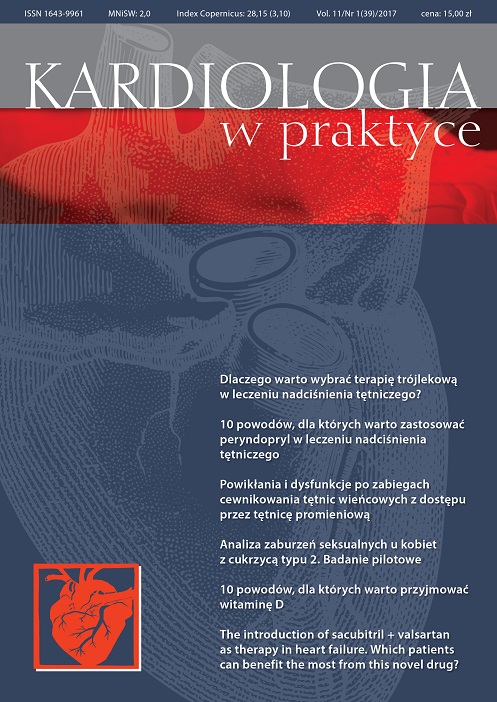Why it is worth to choose triple antihypertensive therapy? Review article
Main Article Content
Abstract
An assessment of clinical trials showed that half of patients with hypertension have uncontrolled blood pressure, with underlying factors including poor patient adherence. Many patients will require three antihypertensive agents to achieve therapeutic goals, and current guidelines recommend combining drugs with complementary mechanisms of action. A single-pill triple-combination treatments is available that includes an agent affecting the renin–angiotensin– aldosterone pathway in combination with a calcium channel blocker and diuretic. The use of singlepill, triple- combination antihypertensive therapy has been shown to be an effective, well tolerated, and convenient treatment strategy that can help patients achieve blood pressure control.
Downloads
Article Details

This work is licensed under a Creative Commons Attribution-NonCommercial 4.0 International License.
Copyright: © Medical Education sp. z o.o. This is an Open Access article distributed under the terms of the Attribution-NonCommercial 4.0 International (CC BY-NC 4.0). License (https://creativecommons.org/licenses/by-nc/4.0/), allowing third parties to copy and redistribute the material in any medium or format and to remix, transform, and build upon the material, provided the original work is properly cited and states its license.
Address reprint requests to: Medical Education, Marcin Kuźma (marcin.kuzma@mededu.pl)
References
2. Gupta A.K., Arshad S., Poulter N.R.: Compliance, safety, and effectiveness of fixed-dose combinations of antihypertensive agents: a meta-analysis. Hypertension 2010; 55: 399-407.
3. Bramley T.J., Gerbino P.P., Nightengale B.S. et al.: Relationship of blood pressure control to adherence with antihypertensive monotherapy in 13 managed care organizations. J. Manag. Care Pharm. 2006; 12: 239-245.
4. Fung V., Huang J., Brand R. et al.: Hypertension treatment in a Medicare population: adherence and systolic blood pressure control. Clin. Ther. 2007; 29: 972-984.
5. Wald D.S., Law M., Morris J.K. et al.: Combination therapy versus monotherapy in reducing blood pressure: meta-analysis on 11,000 participants from 42 trials. Am. J. Med. 2009; 122(3): 290-300.
6. Roas S., Bernhart F., Schwarz M. et al.: Antihypertensive combination therapy in primary care offices: results of a cross-sectional survey in Switzerland. Int. J. Gen. Med. 2014; 7: 549-556.
7. Weir M.R., Hsueh W.A., Nesbitt S.D. et al.: A titrate-to-goal study of switching patients uncontrolled on antihypertensive monotherapy to fixed-dose combinations of amlodipine and olmesartan medoxomil ± hydrochlorothiazide. J. Clin. Hypertens. (Greenwich) 2011; 13: 404-412.
8. Breitscheidel L., Ehlken B., Kostev K. et al.: Real-life treatment patterns, compliance, persistence, and medication costs in patients with hypertension in Germany. J. Med. Econ. 2012; 15: 155-165.
9. Toth K.: Antihypertensive efficacy of triple combination perindopril/indapamide plus amlodipine in high-risk hypertensives: results of the PIANIST study (Perindopril-Indapamide plus AmlodipiNe in high rISk hyperTensive patients). Am. J. Cardiovasc. Drugs. 2014; 14(2): 137-145.
10. Páll D., Szántó I., Szabó Z.: Triple combination therapy in hypertension: the antihypertensive efficacy of treatment with perindopril, amlodipine, and indapamide SR. Clin. Drug Investig. 2014; 34: 701-708.
11. Schafer H.H., Sudano I., Theus G.R. et al.: Target blood pressure attainment with antihypertensive therapy in Swiss primary care. Blood Press. 2012; 21: 211-219.

